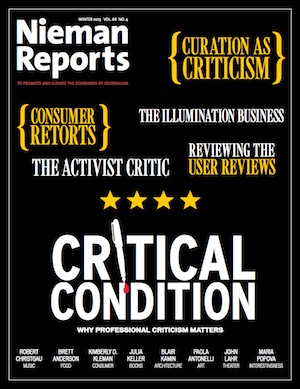Here, Paola Antonelli of the Museum of Modern Art describes how video games and other digital works have become part of MoMA’s collections.
 Not long ago, I published a post on the MoMA website announcing the acquisition in the museum’s collection of the first 14 video games. I tweeted it and then went about my business. The post has received some 200 comments and my words have been retweeted 500+ times.
Not long ago, I published a post on the MoMA website announcing the acquisition in the museum’s collection of the first 14 video games. I tweeted it and then went about my business. The post has received some 200 comments and my words have been retweeted 500+ times.
My colleagues and I knew that MoMA anointing video games would provoke a stir. We had been using peculiar criteria to appreciate video games not as popular and historical artifacts or as animation and illustration masterpieces, but rather as interaction design, a fairly obscure new discipline concerning the communication between humans and machines.
In the name of interaction design, we had left out some enormously successful titles, and we were aware of how touchy avid gamers can be when you pass on their favs. Also, we expected that several embarrassingly out of touch individuals — I could bet you, some card-carrying critics among them — would thunder against the heresy of considering video games Art. We were expecting pushback, gratuitous criticism, and a good dose of snark. We were pleasantly surprised instead by the constructive debate.
Writing in Wired.com, graphic designer and author John Maeda heroically stood up for us in the face of a diatribe from the Guardian’s art critic Jonathan Jones. Maeda’s post was followed shortly by a rebuff from the Guardian itself, in the person of Keith Stuart, a journalist covering the videogame industry. Curators — like artists, directors, and choreographers — receive critics’ valiant efforts to make the world a better place, even though they often feel the world might be better without certain curators, artists, directors and choreographers. It is easy to think of some critics as birds of prey who gratuitously undercut the creative efforts of others. Some of them feel their official role is to thunder, and they sometimes get so boxed in inside their prisons of negativity and personal taste that they become caricatures rather than critics.